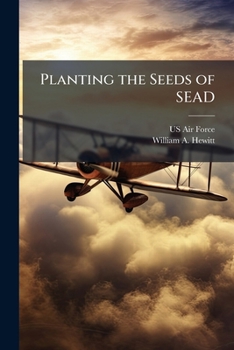Planting the Seeds of SEAD
Aircrews had dealt with threats --fighters and anti- aircraft artillery (AAA) --since the beginnings of the use of aircraft in combat, but the introduction of the Soviet-built SA-2 surface-to-air missile (SAM) in the Vietnam War ushered a new and deadly threat into air war over Vietnam. Although it was not an unexpected threat, having earlier shot down two American U-2 reconnaissance aircraft, the US Air Force's tactical forces were largely unprepared. A counter had to be found, and that counter was the Wild Weasel, a specially configured F-100 F aircraft with electronics for detecting and then homing on radar emissions from SAM sites. The Weasel proved to be an effective weapon for suppressing enemy radar and SAM threats.
Many changes occurred in the Weasel program. The F-100F airframe was too slow to keep up with the primary attack aircraft of the day, the F-105, so the Weasel electronics were added to an F-105 aircraft designated the EF-105 and later redesignated the F-105G. That airframe had too little life left in it and was itself replaced by the F-4C. Following the Vietnam War, the F-4C was replaced by the current Wild Weasel platform, the F-4G, a modified F-4E platform incorporating more capable electronic gear for employment against the mobile Soviet threats.
Along with changes in aircraft came changes in weapons and tactics. The first Weasels employed rockets to mark the target for following attack aircraft who would destroy the SAM sites with bombs or cluster munitions. These tactics required the aircraft to overfly the heavily defended sites, increasing the aircraft's vulnerability to the SAMs and to AAA.
The introduction of Shrike anti-radiation missile (ARM) negated the requirement to overfly the site, but its short range required further improvement. The improvement came in the Standard ARM, a missile that was followed by development of the High-Speed Anti- Radiation Missile, or HARM, the weapon of choice for today's Weasel.
The later years of the Vi
This work has been selected by scholars as being culturally important, and is part of the knowledge base of civilization as we know it. This work was reproduced from the original artifact, and remains as true to the original work as possible. Therefore, you will see the original copyright references, library stamps (as most of these works have been housed in our most important libraries around the world), and other notations in the work.
This work is in the public domain in the United States of America, and possibly other nations. Within the United States, you may freely copy and distribute this work, as no entity (individual or corporate) has a copyright on the body of the work.
As a reproduction of a historical artifact, this work may contain missing or blurred pages, poor pictures, errant marks, etc. Scholars believe, and we concur, that this work is important enough to be preserved, reproduced, and made generally available to the public. We appreciate your support of the preservation process, and thank you for being an important part of keeping this knowledge alive and relevant.
Related Subjects
History




